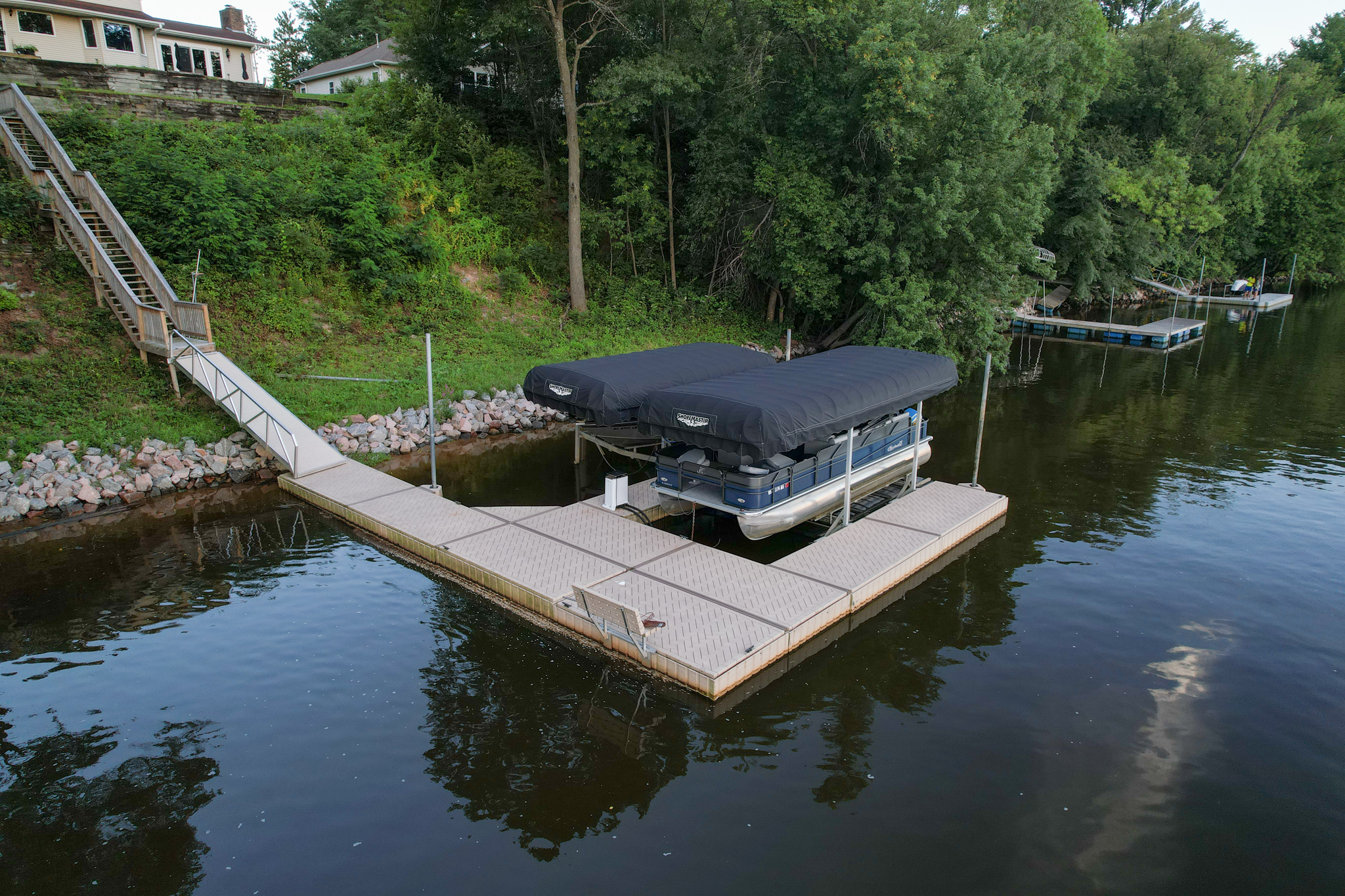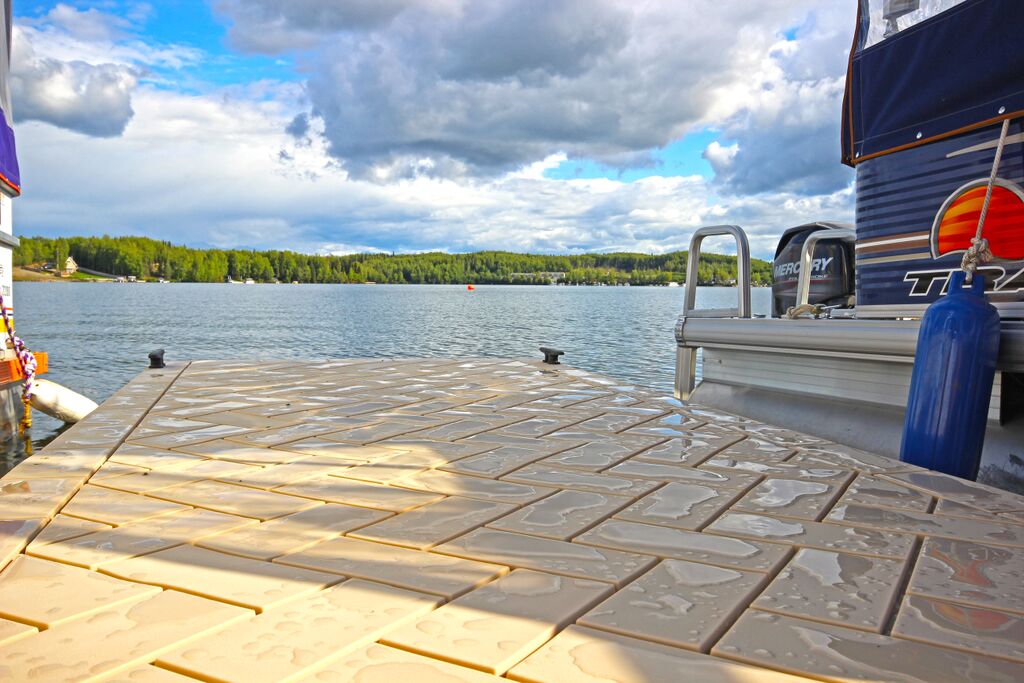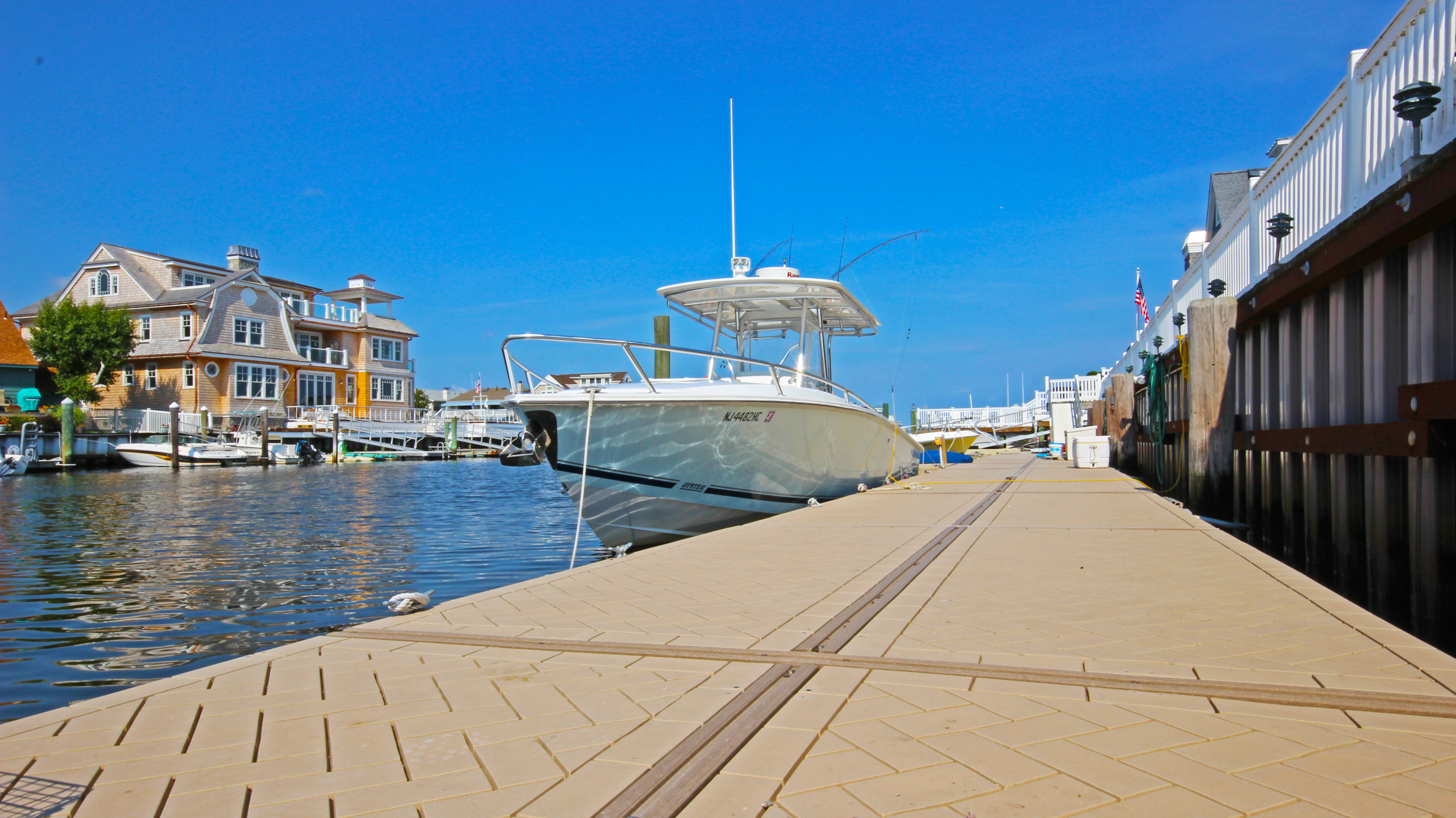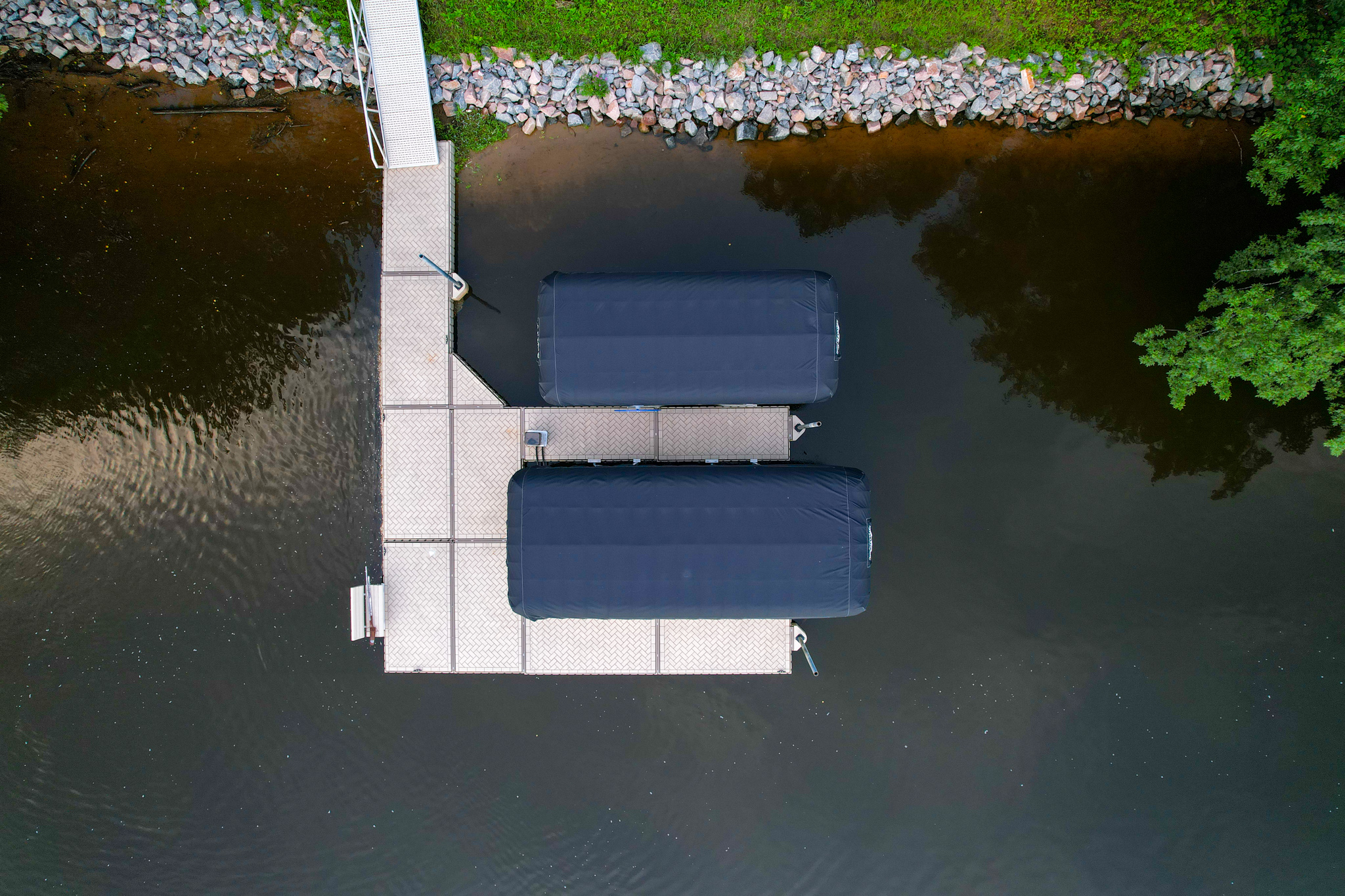Floating Dock Usage
How you plan to use your waterfront system will be a major factor in determining an appropriate floating dock weight capacity. The level of buoyancy required for a dock that you’ll use for swimming or other watersports is different from what would be required to support a large motorized boat, like a pontoon, or the requirements for a commercial dock. PolyDock products are appropriate for residential use of jet skis.
Float Placement and Quantity
The size and shape of your dock also dictate how many floats you’ll need. You’ll want enough to achieve balance and stability, which is achieved by placing floats at the perimeter, and keeping the design symmetrical if possible. Durable materials will also play a role in how well the floating dock stays afloat and holds up after seasons of use.
PolyDock’s floats are underneath the dock segments, integrated into the construction. These sections are constructed of polyethylene with a UV inhibitor to protect them from degradation due to sun exposure. They also stand up to low temperatures and have a high tensile yield strength to withstand many marine hazards.
Freeboard
How much freeboard do you need? Freeboard is calculated using a combination of unused flotation and the height of the material used in dock construction (assume that the first inch is lost to support the weight of the dock itself, and that the first few inches at a float’s base are less buoyant than the top due to the usually tapered shape). For PolyDock docks, the freeboard under dead load is 14.5 inches (+/- one inch). Under a dead load plus 30 pounds per square foot, the freeboard should be eight inches or more.
Attachment
Dock floats must be securely attached in order to provide stability and safety. Luckily, with PolyDock floating jet ski platforms, the floats are integrated into the construction, which makes this something of a moot point. In addition, the dock segments are easy to connect to one another. On PolyDock products, the connections are designed so that the floating dock segments can be disconnected and moved as layout needs change. These connections are designed to transfer loads created by horizontal and vertical forces, meaning that your connection will remain strong, no matter how you attach your dock segments to each other while supporting an appropriate amount of weight. Anchoring options are also available for site-specific, floating dock applications.
Floating Dock Installation from PolyDock
Every shoreline is unique, and so is every floating jet ski dock situation. What works for one boater might not work for you, depending on your watercraft, the amount of space available to you, and the water conditions that you’re working with. When you’re ready to buy a floating dock, talking to PolyDock is one of the best ways to determine how much capacity and which products work for you: get in touch today to get started.





